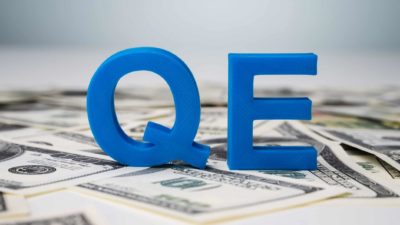The phrase 'dot.com' has a special meaning for investors, and it hasn't got a whole lot to do with internet URLs. The not-so-baby-faced investors amongst us would remember the turn of the century quite well. In the years leading up to the year 2000, share markets around the world were on an absolute tear. The dawn of the internet, as we know it today, was in full swing. Companies like Amazon.com Inc (NASDAQ: AMZN) and Alphabet Inc (NASDAQ: GOOG)(NASDAQ: GOOGL) were, for the first time, beginning to enchant investors with the possibilities of what the internet could bring for shareholders.
Famously, this excitement turned into a frenzy that has come to be known as the 'dot-com boom'. Between 1999 and 2000 for example, Amazon shares went from around US$20 to US$100 a share (which seems laughable now, but it was a big deal back then). Internet infrastructure company Cisco Systems Inc (NASDAQ: CSCO) also experienced a similar move, going from around US$12 a share to nearly US$80 over the same period. Unlike Amazon, Cisco shares have never reached those heights again, 20 years later. Today, they sell for US$44.32.
But back then, it seemed every company that told investors it had even the vaguest hint of being an 'online business' would see a flood of capital chasing its shares.
We can see this in the performance of the tech-heavy Nasdaq Composite Index (INDEXNASDAQ: .IXIC). According to Macrotrends, the Nasdaq posted a 39.92% gain in 1995, a 22.71% gain in 1996, a 21.64% gain in 1997, a 39.63% gain in 1998 and a whopping 85.59% gain in 1999. No wonder that's the year Prince was partying!
Nasdaq: what goes up must come down?
But those gains are not what anyone should consistently expect from an index, if the past is anything to go by. The following three years were a bloodbath for the Nasdaq. It reportedly lost 39.29% in 2000, 21.05% in 2001 and 31.53% in 2002. Thus, the 'dot-com boom' has become the 'dot-com bust' in investing collective wisdom today.
But that's ancient history, right?
Well, let's have a look at what the Nasdaq has been doing in recent years:
- 2017 — a 28.24% gain
- 2018 — a 3.88% drop
- 2019 — a 35.23% gain
- 2020 (so far) — a gain of 36.14% (since 23 March, it is up more than 80%).
Now those numbers aren't as crazy as the dot-com boom. But they do seem unusually large. For some context, the three years preceding 2017 all brought in gains under 15% per year.
I'm not saying this means that 2021 is going to bring a painful crash. I, like everyone else, have no idea what the markets are going to do tomorrow, let alone next year. But if 2021 sees a year of 85% returns, history tells us we should be on high alert.







